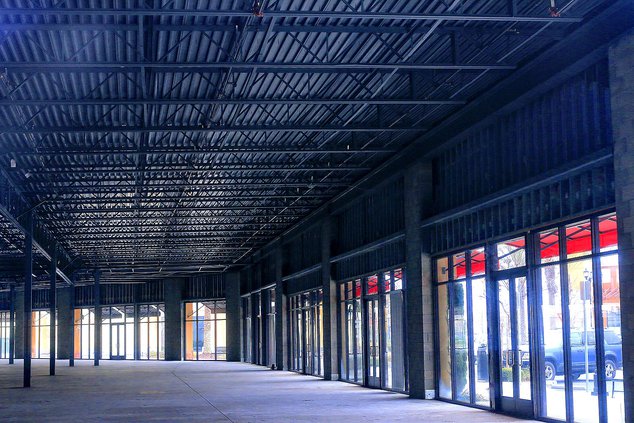The vacant store spaces at The Promenade Shops at Orchard Valley could become the heart of a low-key Northern San Joaquin Valley version of San Jose’s Santana Row.
Poag — the owner of the center at the 120 Bypass and Union Road interchange — is working on a third reincarnation of their development. This time what started out as plans for a lifestyle center anchored by Bass Pro Shops that then morphed into an outlet mall concept that was only able to snag three outlet stores could become a “village” community.
The firm is looking at the possibility of converting parking area and undeveloped store pads into high density residential such as apartments, condos, and townhouses.
If that occurs, it would create a demand for a different assortment of neighborhood retail, service and restaurant users.
At the same time developer Mike Atherton and partners are exploring a proposal to build upwards of 400 apartments on land immediately east of the Bass Pro Shops.
Depending upon the proposal that Poag as well as Atherton ultimately advance there could be well over 1,000 high density housing units on the southeast corner of the Union Road and 120 Bypass where the city is moving forward with California’s first diverging diamond interchange.
Such synergy could create a neighborhood of 2,000 plus residents that could walk to additional restaurants, entertainment venues, neighborhood style shops and services that could fill the empty store space between the Banana Republic and the JC Penney store.
Making the concept feasible is what is already in place. In addition to its inward design that eschewed putting stores on one edge of the property and parking in front, Orchard Valley already has a 16-screen theater, a fitness club, and restaurants.
By pursuing high density housing, it would ironically allow the original concept of the lifestyle center becoming a pseudo new secondary downtown for Manteca to develop. The idea of the center eventually being a community gathering place was reflected in design elements from the lake to the tower near the roundabout fountain that was put in place purposely to preserve the memories of the beloved Manteca High tower that once served as a community icon.
The lifestyle center design called for an open air format with stores facing each other with parking in front of stores as well. The design in other communities encourages similar events that many other lifestyle centers across the country have such as concerts, farmers markets, and other community-style activities. The fact there could be as many as 1,000 high density housing units in close proximity would help make such a concept workable.
Santana Row in San Jose has high density housing surrounding a core area that serves as a gathering place for residents that provides commercial, services, dining, and entertainment venues.
Poag’s vision is the same concept except it would reflect Northern San Joaquin Valley land use development patterns — in other words more accommodation for vehicles — that is spread out just a bit more.
Given where it is located along the freeway at the mid-point of housing development south of the 120 Bypass between Moffat Boulevard and a point west of McKinley Avenue, Orchard Valley could become Manteca’s “downtown” of the 21st century and serve as the focal point for community life south of the Bypass.
The Poag proposal reflects the changing world of brick and mortar commerce as well as the emerging demands for more non-traditional single family homes in Manteca due to the growing influence of the Bay Area market coupled with housing prices and shifting lifestyle changes.
Manteca currently has over 8,000 entitled lots approved for single family homes.
The future land use subcommittee of the City Council appointed Economic Development Committee noted Manteca has an ample supply of lots for conventional single family homes. Based on the current rate of 650 housing units being built a year, the entitled lots represent a 10 to 15 year supply for single family home construction.
The subcommittee identified the need for more affordable housing to rent or own such as condos, townhouses, apartments, and such. They also is a perception Manteca is losing executive home clients to Ripon, Brookside Village in Stockton, and River Islands in Lathrop given Manteca has a lack of such housing available.
The Poag plan would address the more affordable housing concern to a degree but is more likely to fulfill a desire by a growing number of people to be able to pursue a lifestyle in the valley that isn’t tied to traditional single family homes with large yards.
At the same time, the number of entitled lots for single family homes could be whittled down by 1,014 to around 7,000 if a proposal to convert the approved 229-acre Villa Ticino West project on the southwest corner of Airport Way and Louise Avenue into a business park goes forward.
To contact Dennis Wyatt, email dwyatt@mantecabulletin.com





